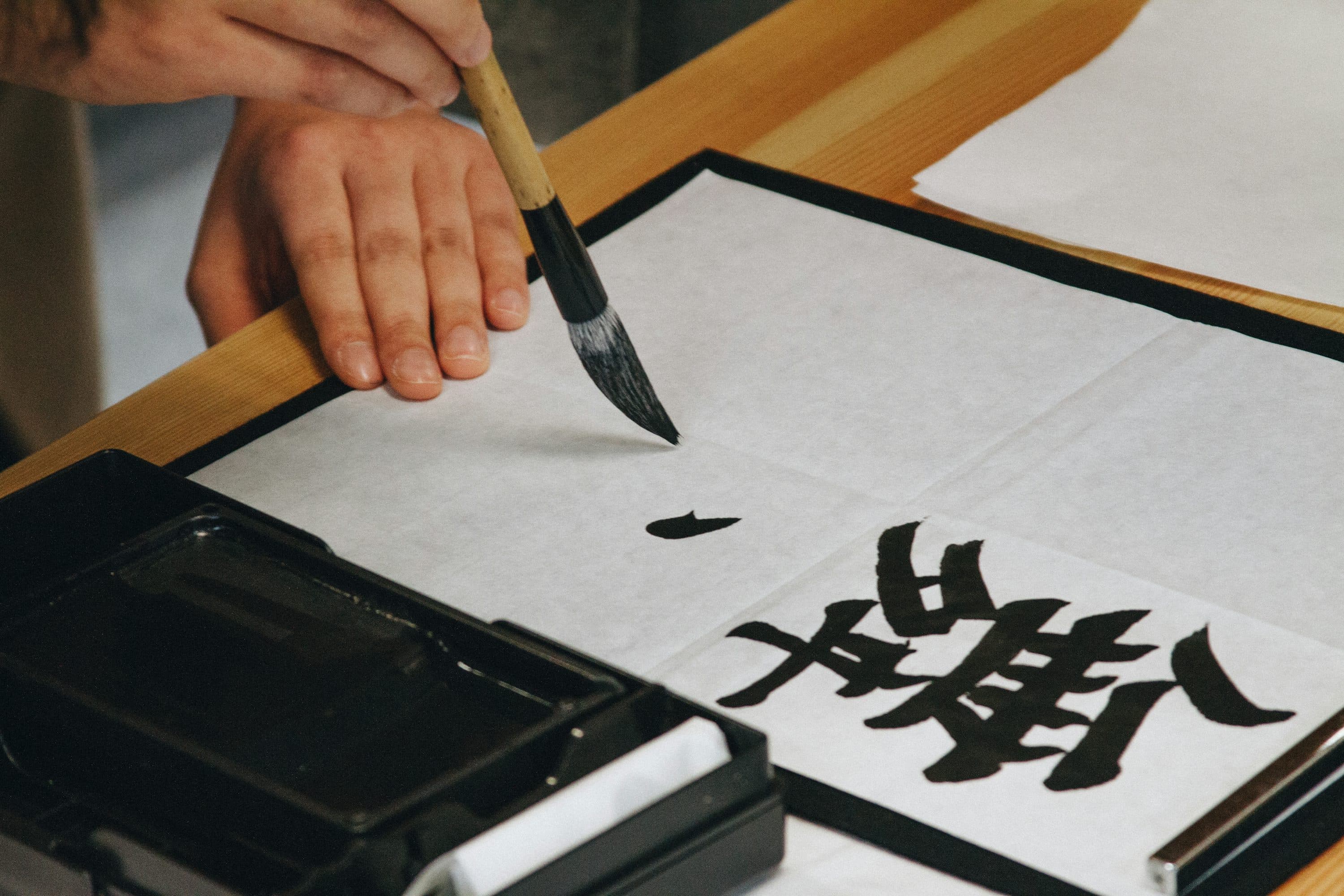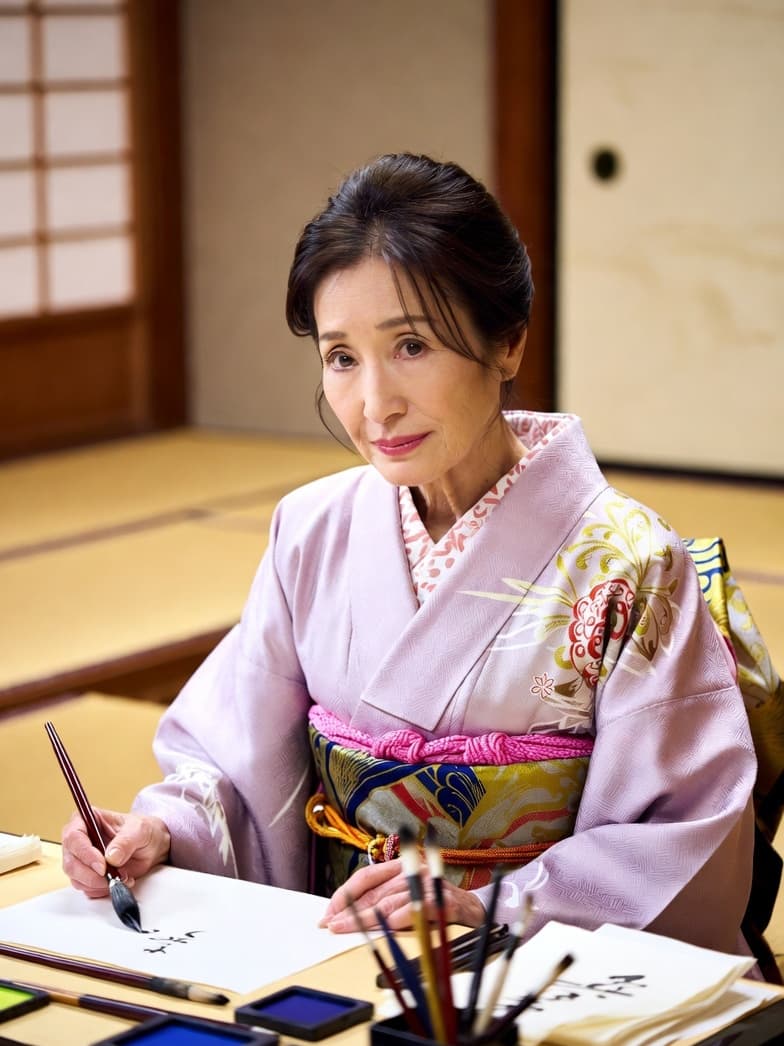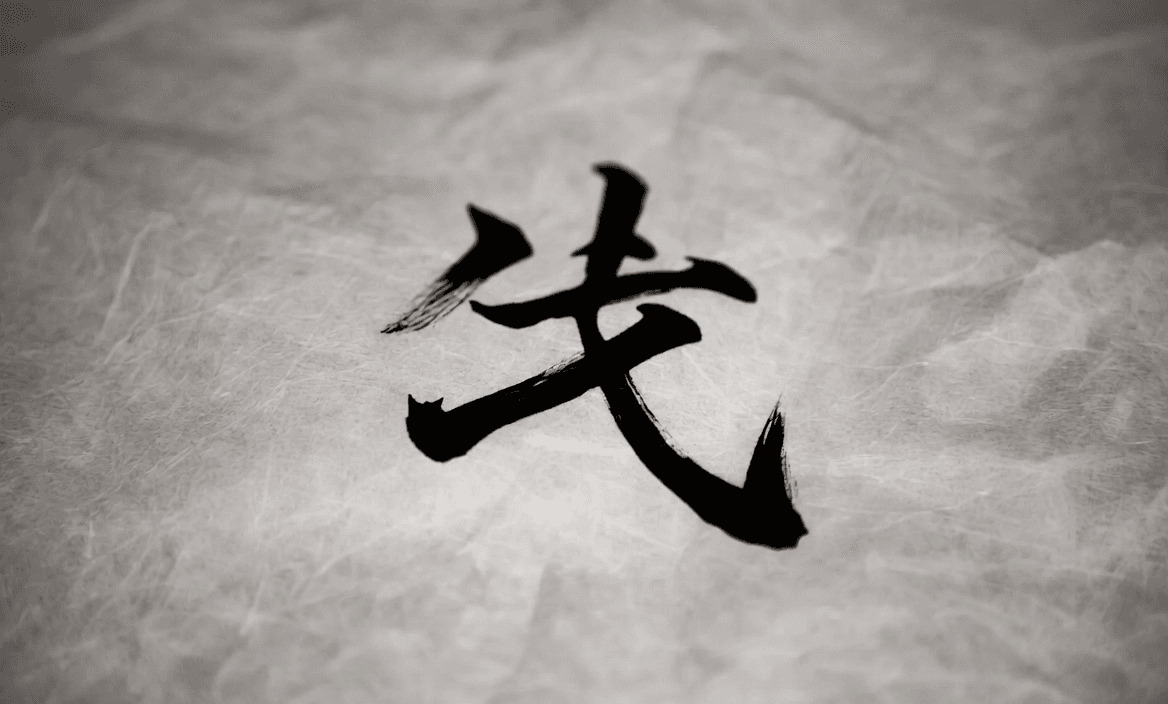First 50 students online • November 2025
Shodo: How A Third-Generation Kamakura Master Uses Japanese Calligraphy To Achieve Zen... And Why She's Teaching This 500-Year Practice Online For The First Time (Learn In 3 Hours)

When Was The Last Time You Created Something?
Not typed. Not texted. Not posted.
When was the last time you sat down with nothing but your thoughts and created something that could only exist because you made it?
You Tell Yourself...
Your handwriting is terrible. You haven't drawn since elementary school. You're not artistic.
But that's the point.

We've Traded Presence For Productivity
Everything we create lives behind glass.
Words we type, then delete, then retype. Digital everything. Nothing real. Nothing that breathes.
And somewhere along the way, we stopped expressing what we actually feel.
We consume content about mindfulness. We watch videos about meditation. We scroll past art instead of making it.
But Here's What Really Keeps You Up At Night
You want a hobby that's actually meaningful.
Not another app. Not another subscription. Not another thing to consume.
Something meditative. Something that forces you to be present. Something therapeutic that doesn't involve talking about your feelings.
You want to create something beautiful with your hands. Something that makes people say "wait... YOU made this?"
Something screen-free. Something quiet. Something real.
A 40-Year Practice In Kamakura

For 40 years, Master Kaoru Tanaka has practiced shodo (書道) in a small studio in Kamakura.
Her grandfather taught her the old way. Not the rigid, academic way they teach in schools. The flowing, meditative way they practiced in temples for centuries.
One breath. One stroke. No going back.
"They Miss The Point Entirely"
"Westerners think shodo is about perfect letters," Master Kaoru says. "They miss the point entirely."
"It's not about perfection. It's about presence. About expressing in one stroke what you could never say in a thousand words."
Why She's Teaching Online For The First Time
Master Kaoru never planned to teach online.
For decades, students traveled to her studio in Kamakura. They sat on tatami mats. They learned the old way—slowly, patiently, in person.
But something changed.
The Observation
She watched her daughter's generation—brilliant, creative people—spending their lives staring at screens.
Consuming instead of creating. Anxious instead of present.
"They need this more than anyone," she realized.
Her Daughter's Question
"If you don't share this now, this knowledge disappears. They're drowning in digital noise. Shodo could save them."
So for the first time, Master Kaoru is teaching her 40-year practice online.
Not because it's easier. Because it's necessary.
The Philosophy Behind The Brush
Shodo isn't calligraphy in the Western sense. It's not about neat handwriting or decorative letters.
It's moving meditation. Expression without words. Personality captured in ink.
Ma (間) - The Space Between
What you DON'T write matters as much as what you do. Negative space. Silence. Breath.
The blank paper isn't empty. It's full of potential. Every stroke you make is a conversation with the space around it.
Mushin (無心) - No-Mind State
When you stop thinking and start flowing. The brush moves before thought. Pure presence.
This is the state athletes call "the zone." Meditators call it "pure awareness." In shodo, you reach it with ink and paper.
Ichigo Ichie (一期一会) - One Time, One Meeting
This stroke, right now, will never exist again. You can't undo it. You can't edit it.
It's perfect because it's yours.
Why Shodo Works When Apps Don't
Here's what students don't expect:
You can't fake presence when you're holding a brush. One moment of distraction, and the ink knows. The paper knows. You know.
It forces you into the moment in a way nothing digital ever could.
You came to learn Japanese writing. You might leave understanding how to be present in your own life.
"For 40 years, I have watched students discover something they didn't know they were missing."
What You'll Learn
The Fundamentals of Presence
Everything you need to begin your practice
- • Setting up your space (you don't need much)
- • Holding the brush—posture, breath, intention
- • The relationship between ink, water, and paper
- • Your first stroke (and why it won't be perfect)
- • The mindset: presence over perfection
Basic Strokes & Characters
Building blocks of all Japanese writing
- • The 8 fundamental strokes that form all characters
- • Writing your first kanji: 心 (kokoro - heart/mind)
- • Practice characters that teach patience: 永 (eternity), 書 (writing)
- • Why your "imperfect" strokes have more personality than perfect ones
- • Developing your natural hand
Breathing & Flow State
Shodo as moving meditation
- • Synchronizing breath with brush movement
- • Entering mushin (no-mind) through repetition
- • The art of ma (negative space)—when NOT to put ink down
- • Moving meditation: shodo as therapy
- • When the brush moves before thought
Expression & Emotion
How feeling becomes form
- • How different emotions create different strokes
- • Writing the same character in joy, sadness, anger—and seeing the difference
- • Creating phrases that mean something to YOU
- • The bridge between feeling and form
- • Expressing what words cannot say
Personal Style & Mastery Path
Making this practice your own
- • Developing your unique hand (no two students write the same)
- • Framing your work—turning practice into art for your walls
- • Gift-worthy pieces: Names in kanji, meaningful phrases
- • The lifetime practice: Where you go from here
- • Continuing your journey beyond the course
The comprehensive guide includes detailed instruction from Master Kaoru, practice exercises, and downloadable stroke guides.
Plus These Bonuses
Complete Materials Guide
Exact links to everything you need on Amazon and specialty suppliers. No guessing. No overbuying. Just what works, nothing you don't need.
Budget option ~$30, premium option ~$60
$27 value
Start With What You Have
Can't get a brush yet? Start TODAY with just a pen and paper. Master Kaoru shows you how to practice the fundamentals with tools you already own.
Upgrade to brush when you're ready
$37 value
Kanji Meaning Library
100+ kanji with meanings, pronunciations, and cultural context. Pick characters that resonate with you—not just random symbols, but words that carry weight.
$47 value
Total Bonus Value: $111
"But What If..."
"The supplies seem expensive..."
You don't need specialized Japanese imports. The Materials Guide shows you exactly what to buy on Amazon for ~$30. Or start with just a pen and paper—Master Kaoru teaches you the fundamentals with tools you already own. No expensive ink stones or handmade brushes required to begin.
"I don't know any Japanese..."
You don't need to. You're not learning a language—you're learning an art form. Many students start by writing their own name in kanji, or simple characters like 心 (heart) or 愛 (love). The Kanji Meaning Library tells you what each character means. You'll appreciate the beauty first, learn the meaning as you go.
"It seems messy... I live in a small apartment"
Shodo setup fits on a desk or coffee table. Modern sumi ink comes in convenient bottles (no grinding ink stones for hours). Lay down newspaper or a plastic mat. Cleanup takes 2 minutes. You need less space than painting, less mess than pottery, less equipment than most hobbies.
"I don't have time for hours of daily practice..."
You don't need hours. 10-15 minutes is enough for a meaningful practice session. Write one character with full attention. That's more valuable than an hour of distracted scrolling. This isn't about becoming a master—it's about being present. Even once a week is enough.
"What if I waste expensive paper making mistakes?"
Mistakes are the point. In shodo, there's no "undo." That's what makes it powerful. And practice paper costs pennies per sheet. Master Kaoru teaches you to embrace imperfection—your "mistakes" have more personality than perfect strokes. The philosophy is literally built around accepting what you create.

Founding Student Pricing
Complete Class Value:
5 Core Modules - 3 hours ($297)
3 Bonus Trainings ($111)
Lifetime Access (Priceless)
Total Value: $408
Regular Price: $97
$47
Founding student pricing • First 50 students
🛡️ 30-Day Money-Back Guarantee
Try the entire class. Do your first character. If you don't love it, email us within 30 days for a full refund. No questions asked.
💳 Secure Payment via Stripe
You're among the first 50 students Master Kaoru is teaching online. After this founding group, the class returns to $97 and we'll be adding live Q&A sessions (which we can't offer yet at this price).
What Students Say
"I haven't felt this present in years"
"I bought this thinking I'd learn 'Japanese handwriting.' What I got was meditation that actually works. My therapist asked what changed."
— Rachel T., Portland
"Finally, a hobby that isn't a screen"
"I'm a software engineer. I spend 12 hours a day on computers. Shodo is the only thing that truly disconnects me. It's therapy without talking."
— James K., Austin
"My terrible handwriting doesn't matter"
"I was worried my handwriting was too messy. Master Kaoru teaches you that 'messy' IS your style. Now I have three framed pieces in my apartment. People ask where I bought them."
— Lin M., Toronto
Common Questions
I have terrible handwriting. Can I really do this?
Yes. Shodo isn't about neat handwriting—it's about expression. Your "messy" strokes have personality that perfect ones don't. Master Kaoru teaches you to embrace your natural hand, not fight it.
Do I need to buy expensive materials?
No. The Materials Guide shows you exactly what to buy for ~$30 on Amazon. Or start with just a pen and paper (Bonus #2) and upgrade to a brush when you're ready.
What if I don't know any Japanese?
You don't need to. The course includes a Kanji Meaning Library with pronunciations and cultural context. You'll learn what you're writing and why it matters.
Is this cultural appropriation?
Master Kaoru's words: "Art doesn't belong to one culture. It belongs to anyone willing to practice with respect. If you honor the tradition, you're welcome."
I don't have time for another hobby.
Shodo takes as much time as you give it. 10 minutes of focused practice is more valuable than an hour of distracted scrolling. It's not about hours—it's about presence.
What if I'm not artistic?
Neither were most of Master Kaoru's students. Shodo doesn't require artistic talent. It requires willingness to be present with a brush. The rest comes with practice.
Do I need a lot of space or special setup?
No. Shodo fits on a desk, coffee table, or even your lap with a board. Modern sumi ink comes in bottles (no grinding required). Lay down newspaper for easy cleanup. You need less space than watercolor painting.
How much time do I need to practice?
Even 10-15 minutes is enough for a meaningful session. Write one character with full attention. That's more valuable than an hour of distracted activity. Practice weekly, daily, or whenever you need to disconnect—there's no minimum requirement.
What if I waste paper making mistakes?
Practice paper costs pennies per sheet. And in shodo, "mistakes" aren't failures—they're your unique expression. The philosophy embraces imperfection. Master Kaoru teaches you to see your natural style, not fight it.
What's the refund policy?
30 days, full refund, no questions asked. Try the course. If it's not for you, email us at support@japanesecalligraphy.school.
"For 40 years, I have watched students discover something they didn't know they were missing. Not perfect letters. Not wall art. But presence. The ability to be here, now, with nothing but breath and ink. This is what we've lost. This is what shodo returns."
— Master Kaoru Tanaka
Kamakura, Japan